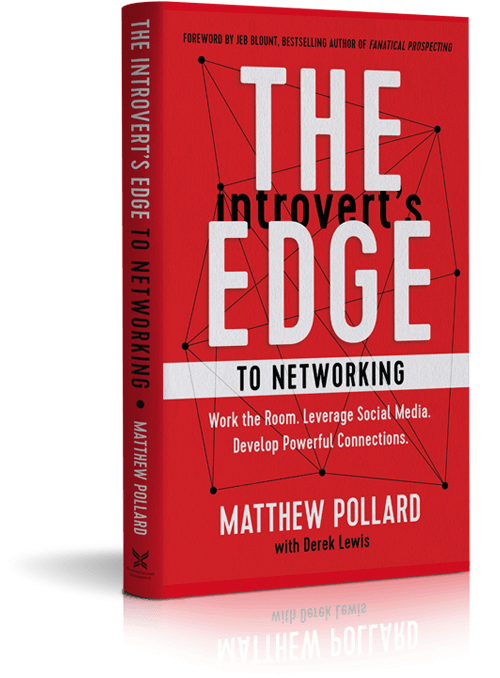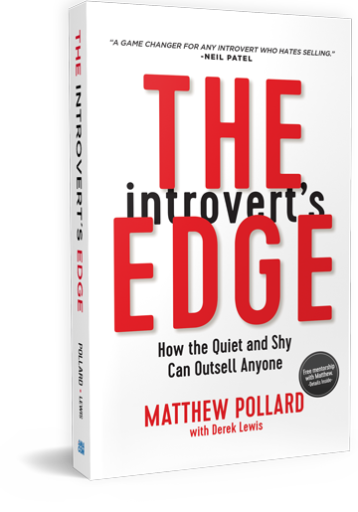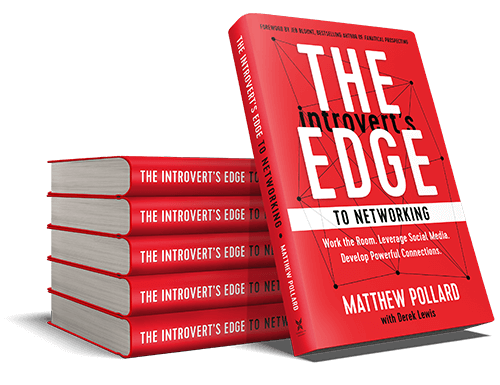Do you often find yourself feeling exhausted and overwhelmed by social or work obligations? Learning how to set boundaries as an introvert is crucial for maintaining your personal energy, well-being, and healthy relationships.
This article will guide you through the importance of setting boundaries and provide practical strategies to establish healthy limits in your personal and professional life. Let’s explore this simple yet challenging topic and discover how to start setting boundaries – and how to maintain them long-term.
Why It’s So Important to Set Boundaries as an Introvert
Boundaries are important, fundamental aspects of healthy living for both personality types, introvert or extrovert. It’s about defining what’s acceptable to you and what’s not, in terms of behavior, relationships, work, and personal space.
Think of it as drawing lines in the sand that help you maintain balance, integrity, and well-being. Setting clear boundaries means that you’re communicating your needs and expectations to others, fostering respect, and creating a space where you can thrive without feeling overwhelmed or taken advantage of.
For introverts of all types, the importance of setting boundaries takes on an added dimension. We have a unique way of processing the world around us, usually needing more time alone to recharge and reflect.
Without clear boundaries, we may find ourselves drained by social interactions, work demands, or even family obligations. The pressure to conform to extroverted norms can lead to a conflict between societal expectations and our introverted nature.
But when we set and honor our boundaries, we create an environment that supports our need for solitude, thoughtful reflection, and meaningful connections. It’s not about isolating ourselves, but about creating space where we can be authentic.
In essence, setting boundaries is like building a personalized roadmap for how you want to navigate life. It’s not selfish, and you shouldn’t feel guilty for drawing these lines. On the contrary, they’re highly important for you to set them and stick to them.
When you’ve set them properly, you’re saying that you’re empowered to take control of your life and honor your needs, values, and unique personality traits.
For introverts, it’s a way to embrace who we are, protect our energy, and engage with the world in a way that feels right for us.
Whether in personal relationships, professional settings, or self-care routines, boundaries are the guideposts that lead to a more fulfilling and balanced life.
What Boundaries Are – And Are Not
The American Psychological Association defines a boundary as “a psychological demarcation that protects the integrity of an individual or group.”
Boundaries are personal guidelines, rules, or limits that a person creates to identify safe and permissible ways for others to behave towards them.
They are about understanding and communicating your own needs, values, and comfort levels. Boundaries help you decide what types of communication, behavior, and interaction are acceptable.
For example, if you need time alone to recharge after work, a boundary might be letting your family know that you need an hour of alone time when you first get home.
Here’s another example of a healthy boundary: If you’re overwhelmed with your workload, a professional boundary might be communicating to your supervisor that you cannot take on additional projects without sacrificing the quality of your work.
Boundaries are not attempts to control or manipulate others’ behavior. They are not ultimatums or threats, nor are they a way to make people in your life conform to your desires at the expense of their own needs or values.
For instance, telling a friend that they must call you every day, or else you won’t be friends anymore, is not setting a boundary. It’s an attempt to control their behavior.
Similarly, demanding that your colleague works late every night to help you with your workload is not a boundary. It’s imposing your needs without regard for their well-being.
Learning how to set boundaries requires self-awareness, clear communication, and consistency. It’s an ongoing process that helps create more balanced and fulfilling relationships, both with yourself and with others.
Why Introverts Struggle to Set Boundaries
Introversion may lead to a struggle with setting boundaries for several reasons:
Empathy and Compassion: Introverts tend to be highly empathetic and compassionate individuals. We often prioritize the needs and feelings of others, which can make it challenging for us to assert our own needs. We may fear that setting boundaries will be perceived as selfish or hurtful to others.
Desire for Harmonious Relationships: Introverts value harmony and peace in their relationships. We may avoid conflict and confrontation, which can make it difficult for us to communicate our boundaries assertively. We may worry about damaging the relationship or causing tension.
Fear of Rejection or Judgement: Introverts may have a fear of rejection or judgement from others. We may worry that setting boundaries will lead to negative reactions or that others will see us as difficult or uncooperative. This fear can prevent us from expressing our needs.
Lack of Assertiveness Skills: Setting boundaries requires assertiveness, which can be a challenge for those of us who are more reserved or quiet by nature. We may struggle with finding the right words or expressing ourselves confidently, which can make it harder to establish and maintain boundaries.
Pressure to Conform to Extroverted Norms: In many cultures and social settings, extroversion is often celebrated and encouraged. Introverts may feel pressure to conform to these extroverted norms, such as engaging in frequent social interactions, participating actively in group settings, or enthusiastically taking on more work.
As you can see, there’s a lot stacked against us! But that doesn’t mean we can’t do it. We just need self-awareness and practice to make it happen.
The Benefits of Setting Boundaries
One of the key benefits of setting healthy boundaries is protecting our energy and avoiding burnout. This is closely related to self care and well-being, as boundaries can prevent us from overextending ourselves or sacrificing our own needs for the sake of others.
Another significant benefit is building confidence as an introvert. The process of setting and enforcing boundaries can help us develop assertiveness skills, empowering us to communicate our needs and desires clearly. This newfound confidence can lead to a greater sense of control over our lives.
Finally, setting boundaries can also improve relationships because it fosters honesty, respect, and understanding. Clear communication of boundaries helps others understand our needs and preferences, which paves the way for more harmonious and fulfilling relationships on both sides.
Tips for Setting Boundaries: Learning to Say No
Now that you understand the importance and benefits of protecting your time and energy, you might be wondering how to actually do it!
Here are some strategies to get you started, along with some ways to set boundaries that work for our unique circumstances:
Identifying Energy Drainers
Think of energy drainers as those activities, people, or situations that leave you feeling exhausted, stressed, or overwhelmed. Most people struggle with energy drainers of one kind or another; it’s just a fact of our fast-paced lives.
In your personal life, energy drainers might include certain social gatherings, constant connectivity to social media, or relationships that demand more than they give. It could be a friend who always needs support but never offers it, or a hobby that’s become more of a chore than a joy.
In the professional realm, energy drainers can be endless meetings, a cluttered workspace, or even colleagues who constantly interrupt your focus. It might be a project that doesn’t align with your values or a work schedule that leaves no room for personal time.
Identifying these energy drainers isn’t about casting blame or avoiding responsibility. It’s about recognizing what doesn’t serve you well and understanding where you need to draw the line.
By pinpointing what saps your energy, you can start to build boundaries one at a time that preserve your well-being, allowing you to engage more fully in what truly matters to you. It’s a proactive approach to self care that empowers you to take control of your life, both personally and professionally.
Identifying energy drainers can be a reflective and insightful process, and you’ll want to spend time getting it right. Here are some practical tips to help you pinpoint what might be draining your energy:
Keep a Journal: Write down your daily activities, interactions, and feelings. Note when you feel energized and when you feel exhausted. Over time, patterns may emerge, highlighting specific energy drainers.
Assess Your Feelings: Pay attention to how certain activities, people, or situations make you feel. If something consistently leaves you feeling tired, stressed, or frustrated, it might be an energy drainer.
Set Clear Goals: Understand what you want to achieve in both your personal and professional life. Anything that consistently pulls you away from these goals without providing value might be draining your energy.
Evaluate Relationships: Assess the relationships in your life, both personal and professional. If someone consistently takes more than they give or leaves you feeling unsupported, they might be an energy drainer.
Consider Your Physical Health: Sometimes, energy drainers can be linked to physical health. Lack of sleep, poor diet, or lack of exercise can contribute to feeling drained. Assessing and addressing these factors can be part of identifying energy drainers.
Seek Feedback: Sometimes, an outside perspective can be helpful. Talk to a trusted friend, family member, or colleague about what you find energizing and draining. They might see something you’ve missed.
Experiment with Changes: If you suspect something is an energy drainer, try making a change and see how it affects you. For example, if constant email checking is draining, set specific times for email and see if it makes a difference.
Identifying energy drainers is often an ongoing process. The goal is to continue to deepen your understanding of yourself, your needs, and your reactions, and using that understanding to create a life that feels fulfilling and balanced.
Deciding on Your Boundaries
Once you’ve identified the energy drainers in your life, both personally and professionally, the next step is to decide on the boundaries that will protect you.
This process is about translating your insights into actionable steps.
1. Prioritize Your Energy Drainers: Not all energy drainers are created equal. Some might be minor annoyances, while others can have a significant impact on your well-being. Prioritize them based on how much they affect you, focusing on the most impactful ones first.
2. Define Specific Boundaries: For each energy drainer, define a specific boundary that addresses it. If endless meetings are draining you at work, a boundary might be limiting the number of meetings you attend each week. If social media is a personal drain, a boundary might be setting specific times for checking social platforms.
3. Consider Flexibility: Boundaries don’t have to be rigid. Consider what flexibility you might need and where you can be firm. It’s about finding the balance that works for you.
4. Communicate Clearly: If your boundaries involve others, communicate them clearly and respectfully. Whether it’s a family member, friend, or colleague, let them know what you need and why.
5. Reevaluate and Adjust: Your needs and energy drainers may change over time. Regularly reevaluate your boundaries and adjust them as needed.
Communicating Your Boundaries
This is where your personal insights and decisions are put into practice, guiding how you interact with others and how they interact with you.
In new relationships and friendships, go ahead and establish your boundaries early. It will save a lot of difficulty and stress over time.
Be Clear and Specific: When your share your boundaries, clarity is key. Whether it’s a need for personal space or a limit on work hours, be specific about what you need. For example, instead of saying, “I need some time alone,” you might say, “I need an hour to myself after work to recharge.”
Use “I” Statements: This helps convey your needs without sounding accusatory. Saying “I feel overwhelmed when I have too many meetings” focuses on your experience rather than blaming others.
Practice Assertiveness: Communicating boundaries requires assertiveness. It’s about expressing your needs confidently and respectfully, without aggression or passivity.
Consider Timing and Context: A calm and private conversation is often more effective than a heated public confrontation.
Reinforce When Necessary: People may forget or test your boundaries. Be prepared to reinforce them calmly and consistently if needed. Don’t be afraid to use a direct phrase like, “Please respect my boundaries.”
Respect Others: Just as you want others to respect your boundaries, show the same respect for theirs. What better way to foster mutual understanding and trust?
Setting Personal Boundaries
Now that we have a solid foundation in boundary setting, including the biggest challenges that introverts face when they start setting new boundaries, tips on how to set them, why it’s so important to set them, and why we all must learn to say no from time to time, let’s look at a few specifics.
We often feel conflicted when we have to say no to the people in our lives we’re closest to – and for some of us, even people we barely know. We may feel like we want to please others, or that the need for alone time and rest and relaxation is selfish.
Despite our knowledge that boundaries will help us flourish, we may hold on to those unshakeable feelings of guilt at simply asking for even an hour or two of downtime, for example.
Here are a few of the most critical things for sensitive people to consider in setting the personal boundaries you need to thrive.
Managing Over-Scheduling
Over-scheduling can be a significant source of stress and burnout.
To avoid this, ask yourself how you can manage your commitments while ensuring a healthy balance between socializing and solitude.
Listen to that internal voice that pipes up when someone asks a favor or extends an invitation.
Do you know in your heart that social time is something you really should say “no” to today? Will you be giving in to extroverted expectations and denying yourself some much-needed recharge time?
It’s perfectly fine to tell your friends and family that as much as you enjoy being around them, you can’t make it this time.
Because as we all know, it isn’t just the event itself that takes up your time and energy. It’s also the dread of the event — not just the day you’ve committed to it, but the days leading up to it.
How many times have you instinctively said yes to something that you don’t enjoy or don’t really have the energy for?
Then you beat yourself up for committing, wonder if you can somehow cancel without looking bad, knowing you’ll need some introvert time to recoup your energy.
So how do you handle asking for space without feeling guilty about it? Read on.
Handling Peer Pressure
Peer pressure is influence exerted by a group, encouraging individuals to conform to the group’s norms.
It can occur at any age and isn’t always negative; it may stem from well-intentioned desires to include or engage others.
However, it can create discomfort, even when the intention is positive.
For introverts, it can manifest as pressure to be more social, outgoing, or engaged in activities that may not align with our needs or preferences.
It might be a friend or family member trying to influence your life choices, such as relationships and career path. It could be someone asking you to watch their kids yet again, because they know you’re a people pleaser and likely to say yes.
Dr. Philip J. Lanzisera, a psychologist at Henry Ford Health, advises that the first step to combating peer pressure is to know yourself.
Clearly understand your goals and values, and tactfully let others know when their request doesn’t align with them. These goals and values can be simple.
For example, introverts need and value downtime. If you’re planning to spend the evening doing something rejuvenating for yourself, like meditation or a nice nature walk, you can simply say, “I actually have some solo plans to recharge tonight, but thank you for thinking of me.”
That’s a lot easier and more tactful than saying, “I don’t want to come,” while still telling the truth!
Here are a few other honest, clear, non-offensive ways to turn down an invitation or request:
“I really appreciate the invite, but I can’t make it this time.”
“I have other commitments on that day, but I hope you have a fantastic time!”
“I can’t make it this weekend, but how about we catch up next week?”
“I wish I could assist, but I’m unable to help out with that right now.”
“I’m honored you thought of me, but I’m not in a position to help with that favor right now.”
Does it feel weird to say no without some kind of explanation? If so, you can always tack on something like, “I have a full plate, and I’ve carved out some time to attend to myself and my family.”
If it still feels weird, keep reading.
Practicing Assertiveness
Assertiveness is all about expressing your needs and wants clearly and respectfully, without aggression or passivity.
It’s the middle ground between being overly aggressive and completely passive, and it’s essential for maintaining healthy relationships and self-respect.
Practicing assertiveness empowers you to stand up for yourself and communicate your needs without feeling selfish. It’s about recognizing that your needs are just as important as others’ and that it’s okay to prioritize yourself.
You can start practicing assertiveness by using “I” statements that express how you feel and what you need.
For example, instead of saying, “You always expect me to be available,” you can say, “I need some time for myself this weekend.”
This approach focuses on your feelings and needs, without attacking or blaming others.
Being assertive doesn’t mean being rude or demanding, even though it may initially feel that way to an introvert who avoids confrontation.
Instead, it means being honest and clear about what you need while still considering the feelings and needs of others.
It takes practice, especially if you’re not used to standing up for yourself, but the more you practice, the more natural it will become.
And the more you assert your boundaries, the more others will come to understand and respect them.
Setting Professional Boundaries
Professional boundaries are equally important as personal ones, especially for introverts who may need to navigate various social dynamics at work.
Here’s how you can set effective professional boundaries in different contexts:
With Colleagues
Working with colleagues often requires collaboration and communication. For introverts, it’s essential to communicate your work style and preferences.
Here are some considerations to keep in mind:
Identify Your Needs: Understand what you need to work effectively and what might cause stress or discomfort. These needs might include quiet time for focused work, regular breaks, or specific communication preferences.
Communicate Clearly: Use clear and direct language to express your boundaries. For example, “I prefer to have a heads-up before impromptu meetings, so I can prepare” or “I need an hour of uninterrupted time in the morning to focus on my tasks.”
Be Consistent: Apply your boundaries consistently to avoid confusion. Stick to them without giving in.
Use Visual Cues: If you’re working in an office, consider using visual cues like a “Do Not Disturb” sign or headphones to signal when you need focused time.
Offer Alternatives: If you need to decline a request or invitation, consider offering an alternative that aligns with your boundaries. For example, “I can’t join the lunch meeting today, but I’m available for a catch-up later in the afternoon.”
With Your Boss or With Clients
Establishing boundaries with superiors or clients can be more challenging but equally vital.
Be clear about your working hours, especially if you’re working remotely, to avoid burnout.
If a client or boss consistently contacts you outside of work hours, you might say, “I appreciate your enthusiasm, but I’m offline after 6 pm. I’ll be sure to address this first thing tomorrow.” Again, it’s about setting expectations and sticking to them.
Here are a few other phrases that might come in handy with your boss or clients:
“I’m excited about this project, but I’ll need a clear outline of expectations and deadlines to ensure I can meet your needs.”
“I appreciate the opportunity to take on this task, but I’ll need additional resources or time to complete it to the standard we both want.”
“I’m committed to delivering quality work, so I’ll need to focus on our agreed-upon tasks before taking on additional responsibilities.”
“I value our partnership, but I must adhere to my working hours to maintain a healthy work-life balance. I’ll be sure to respond to any inquiries first thing tomorrow.”
“I’m happy to accommodate this request, but I’ll need to adjust the timeline or budget to reflect the additional work involved.”
“I understand the urgency, but I’ll need your feedback by a specific time to incorporate your changes without delaying the project.”
“I’m available for meetings during these specific hours, so please let me know what works best for you within that timeframe.”
Considerations for Remote Work
Remote work presents unique challenges and opportunities for introverts. On one hand, it may provide more control over your environment and interactions. On the other, it may lead to feelings of isolation or pressure to be constantly available.
Set clear expectations for your work hours and breaks, and communicate them with your team. Use tools like “Do Not Disturb” modes on communication platforms, and schedule regular check-ins to stay connected without feeling overwhelmed.
Why Introverts Need to Enforce Boundaries
Enforcing boundaries is just as vital as establishing them, especially for us introverts who may already face challenges in asserting our needs. Here’s why:
Establishing boundaries is the first step in recognizing and communicating your needs and limits. However, without consistent enforcement, these boundaries can easily be overlooked or dismissed by others.
If you don’t follow through on the boundaries you’ve set, it sends a message that they’re flexible or negotiable, leading others to potentially take advantage of your time and energy.
The lack of enforcement can lead to burnout, stress, and resentment.
It undermines the very purpose of setting boundaries in the first place, which is to protect your well-being and maintain healthy relationships.
Conclusion
When it comes to setting boundaries, understanding them is just the beginning. The real magic happens only when you start applying this knowledge in your daily life.
Here’s a simple yet powerful exercise to get you started:
Identify: Think of a situation where you feel uncomfortable or where your needs are not being met.
Define: What would need to change for you to feel comfortable and respected? Be specific.
Plan and Practice: Plan how you will communicate this boundary to others involved, and practice how you will say it.
Implement: This doesn’t have to be a big, elaborate moment, where you sit someone down for a serious talk. In fact, it’s much easier and less stressful if you can casually but clearly drop it in when a situation naturally arises. For example, you don’t have to set up a formal meeting with your boss. The next time she asks you to stay late, set your boundary.
You can do this! It may seem intimidating, especially if you’re a people pleaser who’s historically struggled to say no.
But the elation and empowerment you’ll feel once you’ve communicated your boundary – and stuck to it – is nothing short of life-changing.






































